Headlines and events archive
Displaying 201 - 250 of 1944
You may also find an archive of news published in the media which are related with the Instituto de Astrofísica de Andalucía - CSIC.
Pages

|
09/11/2023 - 12:00
Studying magnetic fields, dynamics, and fundamental physics near a black hole with current and future mm-VLBI instruments The Event Horizon Telescope (EHT) has imaged the black hole shadows of the supermassive black hole at the center of the galaxy M87 (M87*) and at the center of the Milky Way (Sgr A*). Polarimetric imaging of M87* with the EHT enabled significantly stronger inferences on the black hole and accretion parameters than total intensity data alone. Geometric modeling was a central tool for studying the structure of M87* and Sgr A* in total intensity. In... Dr. Freek Roelofs |

|
21/06/2023 - 21/06/2023
https://docs.google.com/forms/d/e/1FAIpQLSf3LCWdpRFmz0JVl9GtG52KDRaGLKNEEw674XWk… Granada |

|
02/04/2024 - 12:30
Single-photon gig in Betelgeuse’s occultation In the realm of astronomical exploration, cutting-edge technologies are indispensable. Single-Photon Avalanche Diode (SPAD) sensors offer unparalleled precision, enabling the detection of individual photons with remarkable timing resolution. However, the current use of single-pixel SPAD devices poses limitations on spatially-resolved imaging in astronomy. Enter two-dimensional SPAD detectors, revolutionizing observation capabilities and enabling... Dr. Francisco Prada |

|
16/05/2023 - 12:00
Seminario Centro de Cálculo Nueva infraestructura de cálculo del IAA Centro de Cálculo |
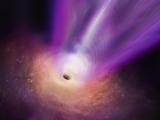
|
26/04/2023
Astronomers image for the first time a black hole’s shadow together with a powerful jet The Institute of Astrophysics of Andalusia (IAA-CSIC) participates in obtaining an unprecedented panoramic view, which shows for the first time the black hole and the jet of matter that emerges from it. The data reveals that the black hole in the galaxy M87, the first to be imaged, consumes matter at a very low rate. |

|
24/04/2023 - 28/04/2023
https://www.granadacongresos.com/ctac-ctao Granada |

|
24/04/2023 - 28/04/2023
https://www.granadacongresos.com/gcw2023 Granada |

|
25/04/2023 - 12:30
SO colloquio: Theoretical models for the formation and evolution of Ultra-Cool Dwarf planetary systems Rocky planets located in the habitable zones around very low-mass objects are ideal targets for searching for life outside our Solar System. In order to better understand their formation and evolution, N-body simulations are needed. These simulations are developed assuming a star close to the substellar mass limit as the central object. The simulations include tidal and general relativistic effects that incorporate the contraction and evolution... Dr. Mariana Sánchez |

|
11/05/2023 - 12:30
Off-centre supermassive black holes in bright central galaxies Supermassive black holes (SMBHs) are believed to reside at the centre of massive galaxies such as brightest cluster galaxies (BCGs), the most massive galaxies which can be found in today's Universe. However, as BCGs experienced numerous galaxy mergers throughout their history, the central BH can be significantly kicked from the central region by these dynamical encounters. By combining the Illustris-TNG300 simulations and orbital integration... Dr. Aline Chu |

|
05/10/2023 - 12:30
SO colloquium: A Light in the Dark - Massive Star Birth Through Cosmic Time Massive stars are important throughout the universe, but their formation remains poorly understood. I review current understanding of how massive stars form in our Galaxy, in particular examining observational tests of various predictions of Core Accretion and Competitive Accretion theories. Finally, I discuss how massive star formation may have been different in the very early universe and how the first stars may have become supermassive... Dr. Jonathan C. Tan |

|
01/06/2023 - 12:30
SO webloquio: The impact of stellar composition: from galactic chemical evolution to planet formation The characterization of solar-type stars is fundamental for various fields in astrophysics, including exoplanet detection and the chemical evolution of our Galaxy. In particular, the determination of chemical abundances for stars at different metallicities and ages provides us with a key insight on how and when the various chemical elements were formed within the Galaxy. The chemical trends observed in different parts of the Galaxy (thin disk,... Dr. Elisa Delgado Mena |
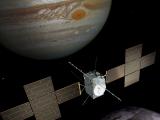
|
11/04/2023
JUICE mission takes off to Jupiter JUICE, the European Space Agency (ESA) mission to study the icy moons of Jupiter, will be launched tomorrow 13 April from the Kourou Spaceport (French Guiana). The Institute of Astrophysics of Andalusia (IAA-CSIC) is participating in two of the mission's instruments, the GALA laser altimeter and the JANUS camera |

|
04/05/2023 - 12:30
SO colloquio: Pulsar astrophysics in the era of large surveys History tells us that with new telescopes and new data processing techniques come new discoveries and breakthroughs in pulsar astrophysics. Despite nearly 55 years since their discovery, fundamental open questions remain in almost all areas of research. Examples include the birth properties and environments, the magnetic field configuration and evolution, the interactions of the superfluid interior with the solid crust, the processes of... Dr. Aris Karastergiou |
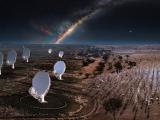
|
05/04/2023
Spain joins the SKA Observatory to participate in the construction of the largest radioastronomy facility on the planet The Spanish contribution to the project, which amounts to 41.4 million euros until 2030, will allow Spanish companies to participate in contracts of high technological value for the construction of this scientific infrastructure. The Institute de Astrophysics de Andalusia (IAA-CSIC) is responsible for the technical coordination of the Spanish participation in the project |
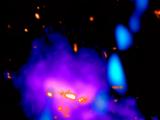
|
30/03/2023
Cosmic stream found that shows how galaxies form The Institute de Astrophysics de Andalusia (IAA-CSIC) is participating in the discovery of a gas stream feeding a distant, massive galaxy, which points to the existence of a large-scale material supply network in the universe |
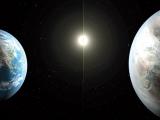
|
22/03/2023
A new planetary system composed of a super-Earth and a mini-Neptune, key to understanding how planets form The Institute of Astrophysics of Andalusia (IAA-CSIC) leads the discovery of TOI-2096, a unique planetary system |

|
28/03/2023 - 12:30
International Asteroid Impact Defense Collaboration The defense of our planet against asteroid impacts counts on international collaboration. NASA's OSIRIS-REx and Japan's Hyabusa2 spacecraft studied two potentially hazardous asteroids Bennu & Ryugu and bring samples back to Earth. NASA's DART, Italy's LICIACube and ESA's Hera spacecraft test a method of planetary defense against asteroids. Dr. Humberto Campins |

|
16/03/2023
The visit to the IAA-CSIC of its External Scientific Advisory Board (ESAB) is over On March 14 and 16, the External Scientific Advisory Board (ESAB), composed of internationally recognized researchers, visited the IAA-CSIC facilities to review the activities of the IAA and to provide advice on future actions. |

|
14/03/2023
Climate change will increase forest fires caused by thunderstorm lightning strikes The Institute of Astrophysics of Andalusia (IAA-CSIC) is leading a study that concludes that lightning could increase by 40% before the end of this century. The study points to a large increase in forest fires in the Mediterranean basin, as well as in the central and west coast of North America |
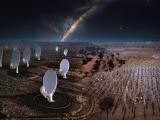
|
08/05/2023 - 10/05/2023
https://www.granadacongresos.com/skaopenscience Granada |

|
20/06/2023 - 12:30
Radio continuum halos in nearby galaxies and the CHANG-ES project About a decade ago, the upgrade from the classic Very Large Array into the EVLA, i.e. the Karl G. Jansky Very Large Array (VLA), made it possible to observe fainter radio continuum emission than ever before. The project Continuum Halos in Nearby Galaxies - an EVLA Survey (CHANG-ES, PI: J. Irwin) has allowed us to probe gaseous halos of 35 edge-on galaxies with arcsecond details and faint microJansky/beam sensitivities, and to begin answering... Theresa Wiegert |
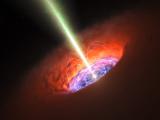
|
07/03/2023
The brightest and most distant quasars, both young and old, show powerful galactic winds The Institute de Astrophysics de Andalusia (IAA-CSIC) leads the study of twenty-two very luminous and distant quasars that completes our knowledge of the diversity of these objects |
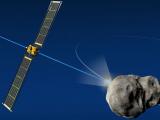
|
01/03/2023
The impact of the DART mission excavated more than five million kilos of material from the asteroid Dimorphos The Institute of Astrophysics of Andalusia (IAA-CSIC) is participating in the study of the material ejected by the impact, which altered the asteroid's orbit around its companion Didymos and produced a crater. The slower material was pushed in an anti-solar direction (almost opposite to the impact) by solar radiation pressure to form a tail, and the faster material showed complex interactions with the asteroid pair |

|
22/06/2023 - 12:30
SO colloquium: X-ray Polarimetry: a New Window to the Universe Polarimetry is a very important technique for understanding magnetic fields and high-energy processes in the Universe. While we have been studying polarization in the radio and optical side of the electromagnetic spectrum for decades, what happens at higher energies has, until recently, eluded us. In 2021 NASA finally launched the first X-ray polarimeter, the Imaging X-ray Polarimetry Explorer - IXPE, offering us a completely new window to the... Dr. Yannis Liodakis |
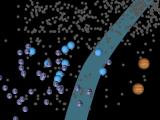
|
22/02/2023
CARMENES instrument multiplies the number of known planets in the solar neighborhood Twenty thousand observations of CARMENES, obtained from the 3.5-meter telescope of the Calar Alto Observatory (CAHA) are made public. The instrument, co-developed by the Institute of Astrophysics of Andalusia (IAA-CSIC), has made it possible to discover 59 planets, some of them in the habitable zone |

|
27/04/2023 - 12:00
El Futuro de la Astrofísica de muy altas energías a través del Open Science: Oportunidades con el Cherenkov Telescope Array Observatory (CTAO) El jueves 27 de abril a las 12:00 CEST, el Cherenkov Telescope Array Observatory (CTAO) y el Instituto de Astrofísica de Andalucía (IAA-CSIC) celebrarán un evento gratuito y abierto para investigadores interesados en la Ciencia Abierta y posibles sinergias con el CTAO, así como para estudiantes de grado, máster y doctorado que deseen desarrollarse profesionalmente en el campo de la Astrofísica de muy altas energías. El seminario, que tendrá... Dr. Roberta Zanin, Dr. Juan Cortina, Dr. Rubén López Coto y Dr. Francisco Colomer |

|
02/03/2023 - 12:30
J-PAS: a survey for tracing the role that star formation and environment play in galaxy evolution The processes that explain the evolution of galaxies from the blue cloud to the red sequence are still under discussion. Internal processes, named as mass-quenching, because they are linked to the galaxy mass or AGN feedback, could be responsible of the rapid quench of the star formation in galaxies. Besides the stellar mass, the evolution of the galaxy populations is also a function of the environment. Unlike the mass quenching, the... Dr. Rosa González Delgado |
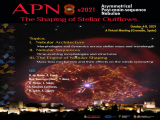
|
04/10/2021 - 08/10/2021
http://apn8.iaa.csic.es Granada |

|
14/02/2023
The IAA-CSIC completes the first network of robotic telescopes present on the five continents Spain becomes the first country in the world to lead a global network of autonomous observatories. The BOOTES network, with seven facilities, is a pioneer in space surveillance and the study of transient cosmic phenomena, which shine briefly, intensely and suddenly. |

|
13/04/2023 - 12:30
Coloquio SO: A holistic approach to exoplanet spectroscopy During the last two decades, multiple observation techniques have enabled the study of exoplanet atmospheres, informing us about their chemical composition, thermal distribution and transport processes. The most successful techniques include low-resolution transit and eclipse spectroscopy, phase curves, and high-resolution Doppler spectroscopy. In all cases, the extraction of the atmospheric signal presents a challenge, being comparable to or... Guiseppe Morello |

|
07/03/2023 - 12:30
Sub-milliarcsecond astronomy with Imaging Atmospheric Cherenkov Telescopes The angular size of a star is a critical factor in determining its basic properties. Together with the distance, it provides the physical diameter of the star which can be used to yield luminosity and mass estimates. Direct measurement of stellar angular diameters is difficult: at interstellar distances stars are generally too small to resolve by any individual imaging telescope. This fundamental limitation can be overcome by several methods... Dr. Tarek Hassan |

|
21/04/2023 - 12:30
Gamma rays as cosmic ray tracers: how can CTAO contribute to the cosmic ray physics Gamma-ray emission produced by interactions of cosmic rays with interstellar matter and radiation fields is a probe of non-thermal particles in galaxies. After decades of instrumental improvements in the field of gamma-ray astronomy, different scales and environments are now accessible and their gamma-ray observations reveal several properties of cosmic rays, especially in our Galaxy. I will provide a short review of the status of the subject... Roberta Zanin |

|
23/03/2023 - 12:30
SO coloquio: Investigating the impact of quasar feedback on the central kiloparsecs of galaxies Active galactic nuclei (AGN) feedback is the effect that nuclear activity produces in the interstellar and circumgalactic medium of galaxies. Different modes of AGN feedback, which can be broadly divided into radiative/quasar and kinetic/radio, are now considered key processes in the evolution of massive galaxies by regulating black hole and galaxy growth. Indeed, a wealth of observational evidence demonstrates that feedback from supermassive... Dr. Cristina Ramos Almeida |

|
16/02/2023 - 12:00
School visit School visit Sara Garcia. |

|
16/03/2023 - 12:30
An observational study of massive star forming regions at radio wavelengths In their early stages, massive stars have a profound impact on their hosting cloud as reflected by signposts like shocks, bars and shells of swept material resulting from prominent stellar winds, or photo-ionized (HII) regions produced by energetic irradiance. This activity must be taken into account in the study of the mechanism of formation of either massive stars or nearby lower mass companions affected by such harsh conditions. It is known... Josep Maria Masqué |

|
09/03/2023 - 12:30
When accretion is as vital as extreme: from massive young stars to binary black holes Accretion is vital for understanding the properties of a number of astrophysical objects, including massive young stars and black holes. For the former, accretion drives the stellar mass growth and multiplicity through gas fragmentation. It also powers strong outflows that regulate the interstellar medium. For black holes, only accretion allows for electromagnetic detection. Hence, the multi-messenger astronomy, for which the loudest sources of... Dr. Raphael Mignon-Risse |
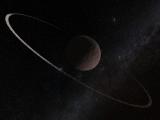
|
08/02/2023
The trans-Neptunian object Quaoar shows a ring that questions a theory used since 1850 The Institute of Astrophysics of Andalusia (IAA-CSIC) participates in the discovery of a dense ring in this object that, with a size equivalent to half of Pluto, raises several problems |
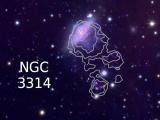
|
01/02/2023
Unexpected tails of gas and stars seen in two Hydra Cluster galaxies The IAA-CSIC leads the study of NGC 3312 and NGC3314a, two galaxies in advanced interaction with the cluster that should have lost most of their gas. The work, which seeks to understand how the environment affects galaxies within a cluster, reveals tidal tails with an anomalous amount of cold gas where stars are even forming |

|
23/02/2023 - 12:30
ALMA: Planned Sensitivity Upgrades, and Molecular Gas Imaging of a z=0.376 HI-Detected Galaxy This talk will cover two distinct topics in progress, one programmatic and the other science: I will first discuss the ALMA Wideband Sensitivity Upgrade (WSU), and then I'll talk about ALMA followup of the highest redshift HI detection in the COSMOS HI Large Extragalactic Survey (CHILES) made with the first 178 hours of observing. With regard to the WSU, the ALMA Project is embarking on a partner-wide initiative to at least double, and... Dr. Jennifer Donovan Meyer |
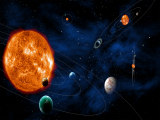
|
30/03/2023 - 12:30
Preparation and Asteroseismic exploitation of the PLATO Mission Thanks to ultra-precise space missions, we are living an era of big scientific discoveries in the stellar and planetary physics fields. PLATO will capitalise on the developments of successful past missions such as CoRoT, Kepler/K2, TESS and CHEOPS that studied stars and their planetary systems. PLATO will detect and characterise terrestrial exoplanets at orbits up to the habitable zone of solar-type stars. Transit measurements and... Dr. Javier Pascual |
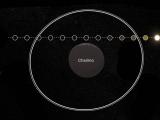
|
25/01/2023
James Webb telescope observes the rings of Chariklo with a high-precision occultation technique The Institute of Astrophysics of Andalusia (IAA-CSIC) is leading an observation campaign with the JWST to capture the shadows of starlight produced by the thin rings of the object, located beyond Saturn. Subsequent observations revealed that crystalline water ice dominates the spectrum of Chariklo and its rings, suggesting that continuous micro-collisions are taking place there |

|
30/01/2023 - 12:30
SO Coloquio: Dirty Dancing: piercing the dusty environment of merging supermassive black holes It is a posit of modern astrophysics that most massive galaxies host a super- massive black hole (millions to billions of times more massive than the Sun). These black holes affect the evolution of galaxies well beyond their gravitational sphere of influence (which does not extend wider than 1/1000th of the typical galaxy linear size). In turn, the evolution of galaxies affects the growth of black holes through, e.g., galaxy merging.... Matteo Guainazzi |
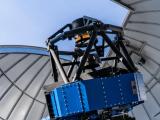
|
09/01/2023
The IAA-CSIC participates in two of the new surveys of the JAST80 telescope of the Javalambre Astronomical Observatory The last phases of stars and the formation and evolution of massive stars will be the objects of study of these new legacy projects |
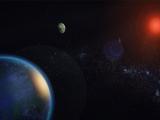
|
15/12/2022
ESPRESSO and CARMENES discover two exo-Earths in the habitable zone of a star close to the Sun The Institute of Astrophysics of Andalusia (IAA-CSIC) participates in the discovery of a multiple planetary system around GJ1002 |

|
14/12/2022
The James Webb Telescope reveals that four to five stars were involved in the formation of the Southern Ring nebula The Institute of Astrophysics of Andalusia (IAA-CSIC) participates in a study that points to the interaction of a multiple star system in the formation of the nebula, which was featured on the cover of the journal Nature Astronomy |
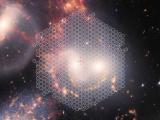
|
13/12/2022
WEAVE first light The Institute of Astrophysics of Andalusia (IAA-CSIC) participates in the WEAVE scientific team, whose first observations already show the high quality of the data that the spectrograph will provide |
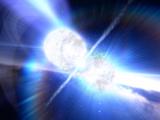
|
07/12/2022
A stellar collision that shone for almost a minute complicates the stellar explosion scenario The Institute of Astrophysics of Andalusia (IAA-CSIC) participates in the study of a gamma-ray burst (GRB) whose characteristics require a revision of the theoretical framework that explains these bursts |
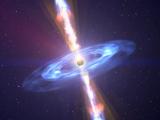
|
30/11/2022
Detected a jet of matter emerging from a supermassive black hole as it devours a star The Institute of Astrophysics of Andalusia (IAA-CSIC) participates in two articles that analyse this very rarely observed phenomenon |

|
02/11/2022 - 04/11/2022
https://home.iaa.csic.es/fundcosmo22/ Granada |

|
18/10/2022 - 21/10/2022
https://www.granadacongresos.com/severoochoa Granada |